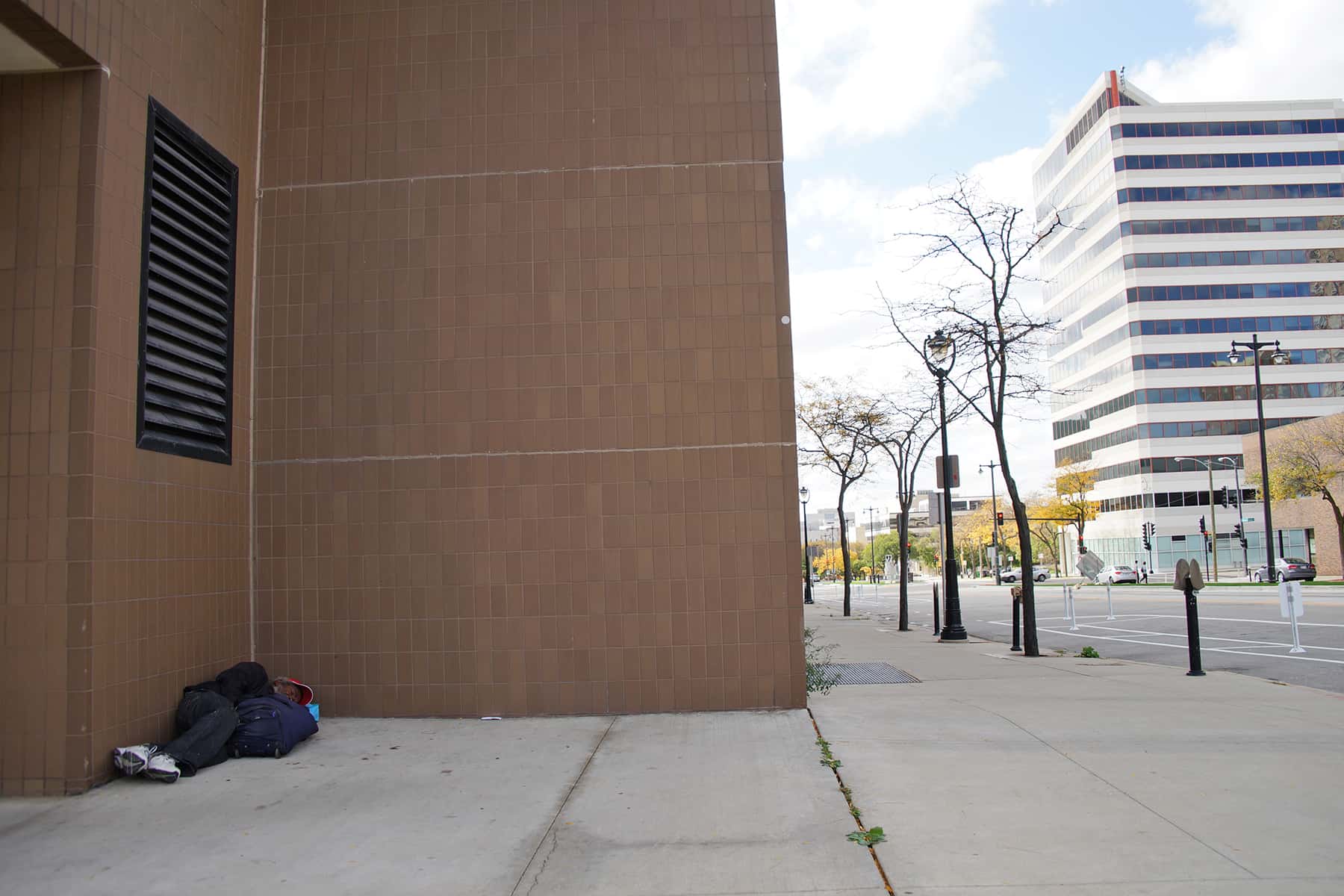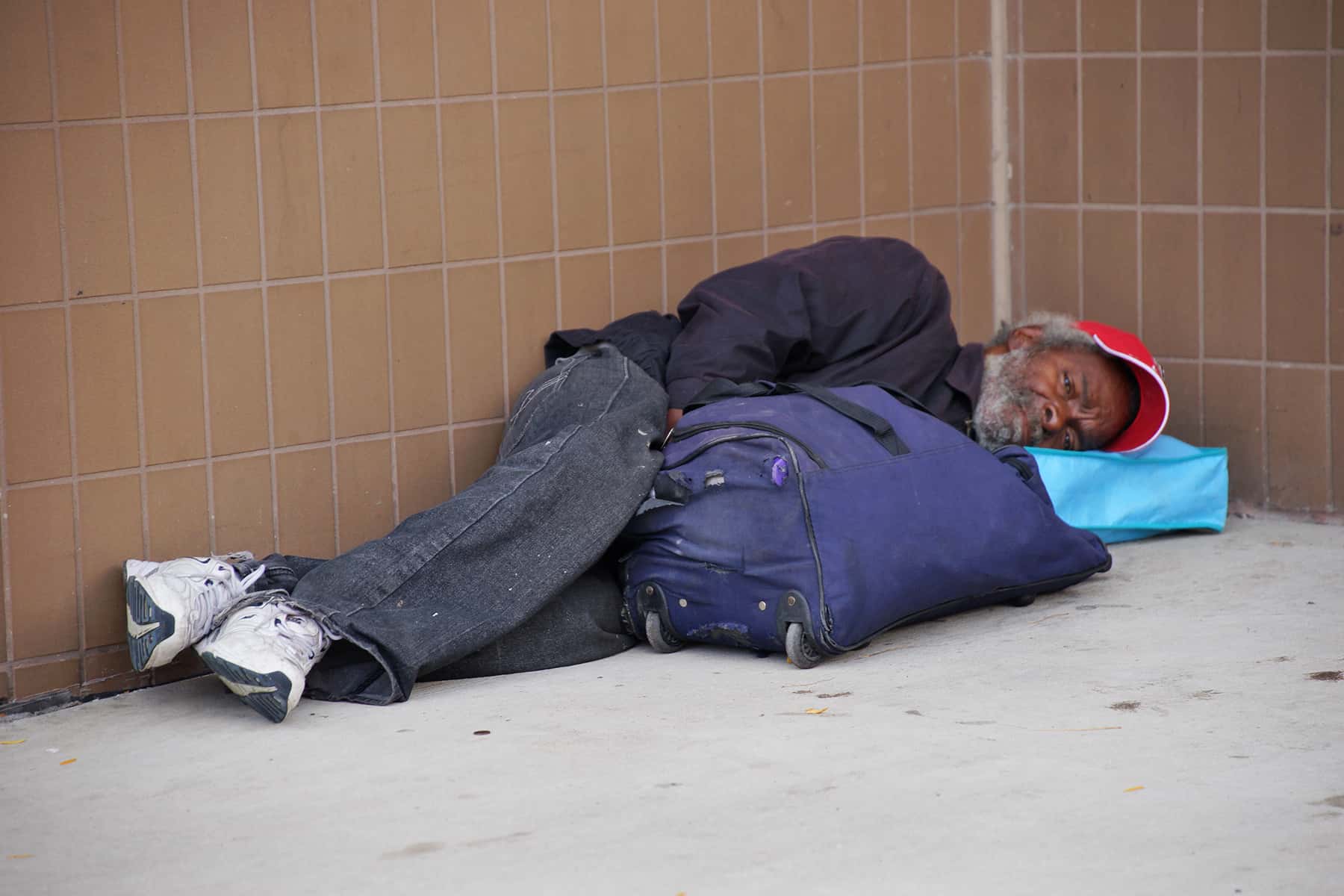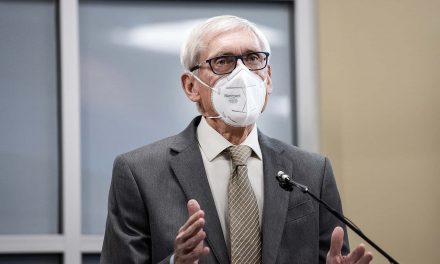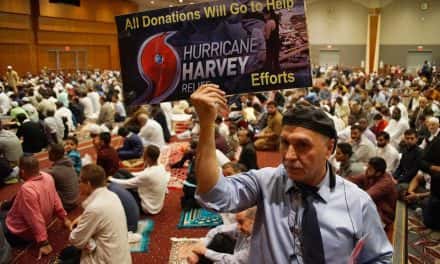
As winter approaches and the temperature continues to drop, there are hundreds of people in Milwaukee living on the streets who will begin to feel the effects and suffer. Many want to help, especially around the holidays, but it can be daunting to know how to get assist them, and how to actually be effective.
While estimates vary, experts place the number of homeless in the United States somewhere near 550,000; a number that rose slightly in recently published findings. More exact figures are tough to come by as there tend to be the more permanent homeless – often those we see on the streets and or living in the woods, and those that can be seen as transitional or temporary homeless – they have lost housing until a new job kicks in, or they are moving from one neighbor or relative to another.
In addition, many homeless avoid being counted making accurate numbers even tougher to come by. In any case, the homeless problem is of considerable magnitude and it only gets worse in the winter especially for those outside who face the brutally and unforgiving cold, snow, and sleet the upcoming months can bring.
I have worked serving the homeless for ten years. During that time, I have seen the toll the freezing chill of winter takes. One young man in our community fell asleep outside and froze to death. Another elderly man had his propane heater stolen days before Christmas and we found him only faintly responsive. During one powerful snowstorm, snow-covered tents collapsed sending occupants to overflowing shelters open only at night. Other examples abound, cataloging the winter-time suffering of those living on the streets and in the woods.
I am often asked by people moved by these and other stories of homeless suffering “what can I do to help?” It is a complicated problem, with no one-size fits all solution. But there are ways you can get started helping the homeless this winter, right in your own community. Here are a few tips to get you started:
1. LEARN ABOUT LOCAL ORGANIZATIONS ADDRESSING HUNGER
Simply Googling “homelessness” in your area can lead you to those government and non-profit organizations addressing the problem. In most instances, volunteers are warmly welcomed. It is a great way to see specifically what these groups do and which ones are a good match for skills you bring to the table. Do you want to help by bringing meals and serving at a shelter? Can you give someone a ride to a health-care provider? Do you have clothes or other items to donate that can be particularly useful during the winter? See what the needs are, and where you can step in, and get started.
2. BRING THE HOMELESSNESS ISSUE TO THE ATTENTION OF YOUR PLACE OF WORSHIP
Often government agencies and non-profits do not have the resources to address all aspects of homelessness. They need help and I have seen the meaningful contributions that faith-based groups can make. Most believers are inclined to help when told how. Sometimes, they figure it out on their own. I am often asked things like “can you use some clothes, some food, some bus tokens?” People want to get involved. In addition to ongoing programs, our church started providing propane tanks (the kind you use for your charcoal grill) to those living in the woods to provide heat and gas for cooking.
3. BE PREPARED TO SPEAK WITH HOMELESS PEOPLE
If you have the opportunity to serve at a shelter, for example, introduce yourself, engage in a conversation with someone who is homeless. Often, it is one event – losing a job, prolonged illness, divorce, or some combination that begins the downward spiral to homelessness. It is so important to them to be seen as an individual; to be accorded respect. It does not have to be anything deep, take your cue from them. I have been at shelters where single mothers have young school children who have been moving from place to place. Maybe there is something you can do, maybe nothing more than be a good listener. In like manner, finding someone outside a fast food restaurant asking for some money, might give you the opportunity to buy them a meal and show some kindness to provide them an extra dimension of warmth during the cold. Some situations might be intimidating, use your common sense, but know too that sometimes if we are going to make a difference we have got to venture outside our comfort zone.
4. STAY INFORMED ABOUT WHAT THE GOVERNMENT IS DOING TO HELP THE HOMELESS
Federal, state, and local governments budget for social services for those in need with your taxes. And you elect the officials who determine where budget monies go. Keep informed and let them know you are concerned that programs for the homeless receive the resources needed.
5. RECOGNIZE THAT THE PROBLEM WILL NOT BE SOLVED OVERNIGHT
Working with the homeless and extending kindness to help those not as fortunate can be a rewarding experience. However, it can be frustrating as well. Longstanding problems, including substance abuse, emotional issues, and criminal records are not uncommon among the homeless. But as said earlier, there is not a one-size-fits-all solution to helping the homeless. Some are very appreciative of the support they receive, others not so much so. Some really want to extricate themselves from the woods and streets, others not as committed to doing so. There is not one person or one group that is going to end homelessness. It is going to take a lot of us, each doing what we can, committed to the long haul.
If individuals encounter those in need, before passing by and thinking someone must be taking care of the problem, recognize that might not be the case. Take that first step, see if there is a need going unfulfilled, and see what you can do. Even if there is dedicated someone helping out, they would welcome extra support.
Lee Matz















